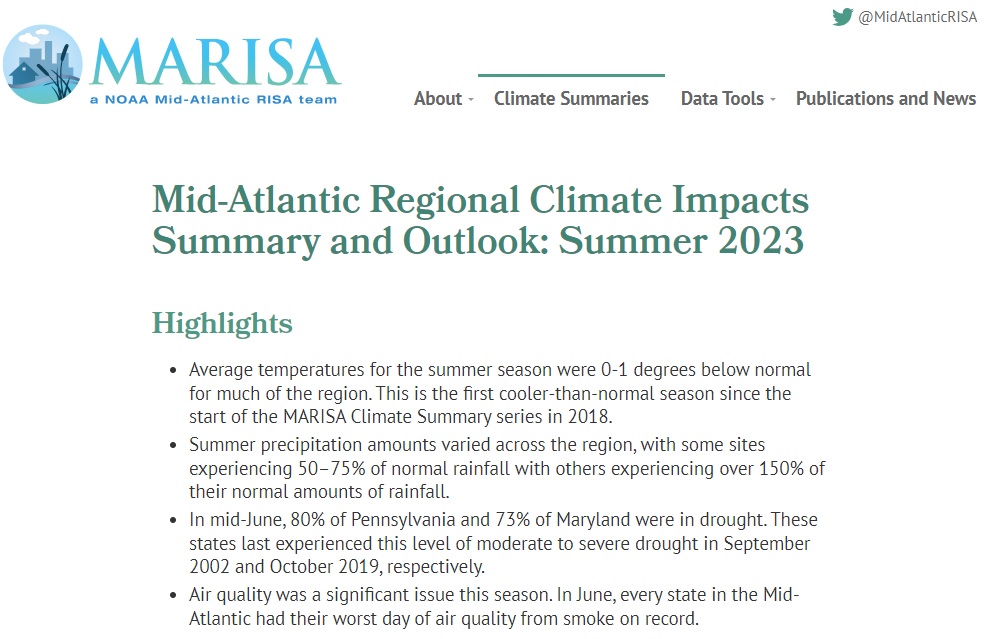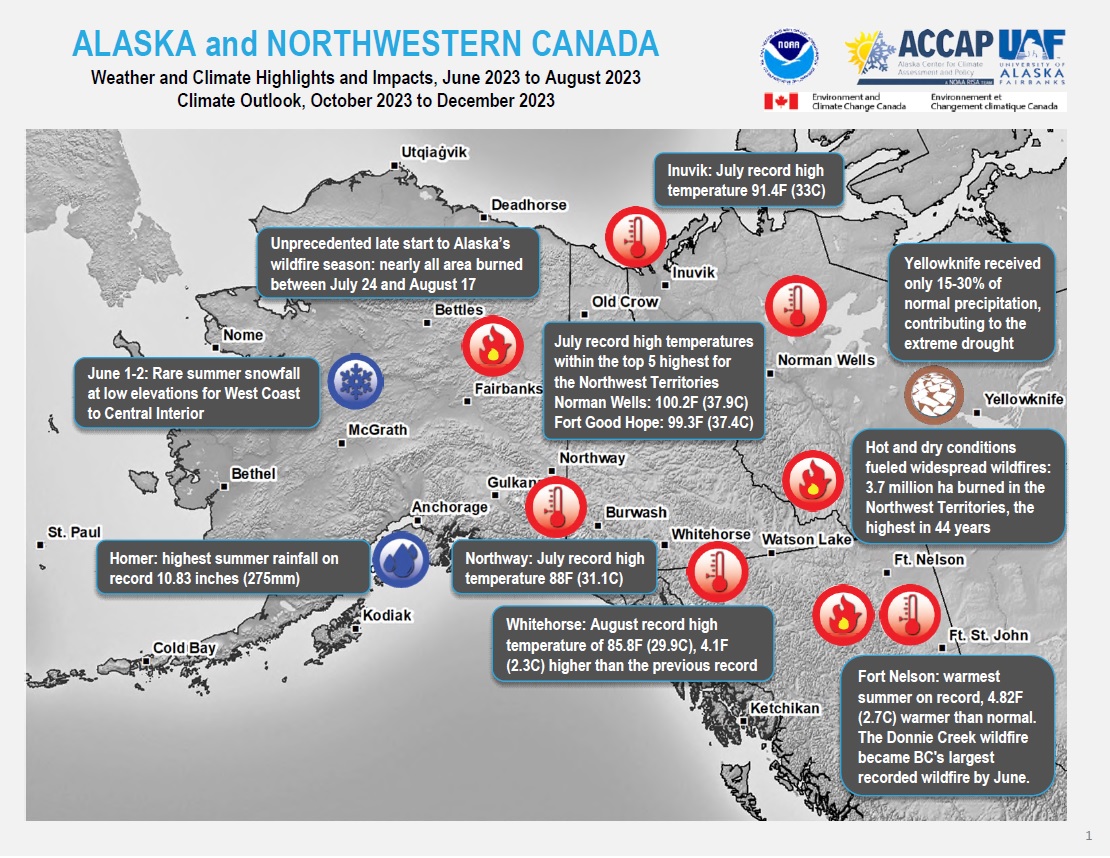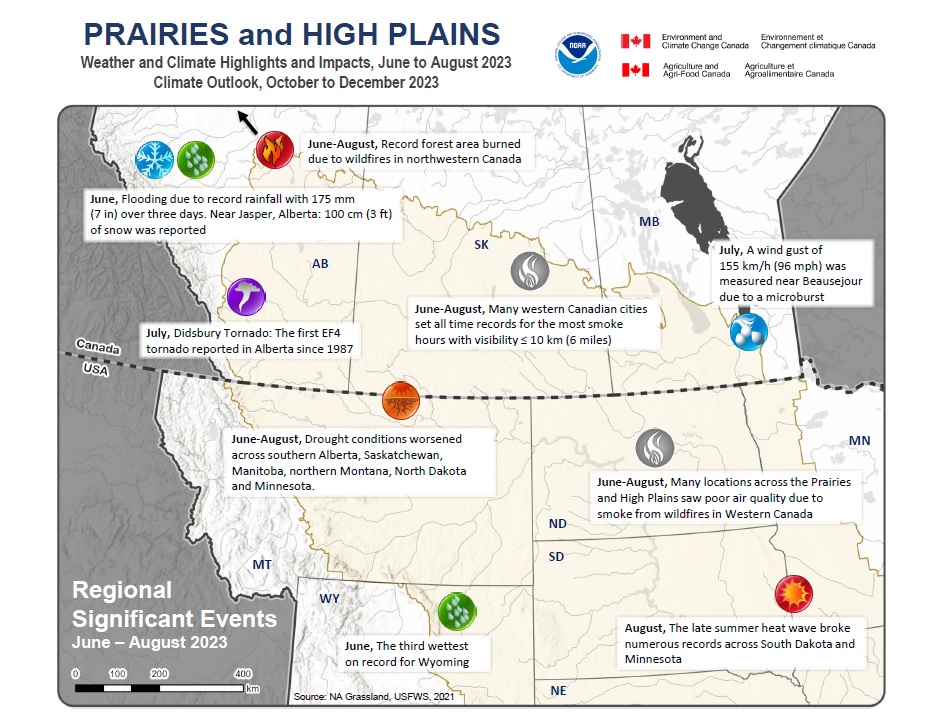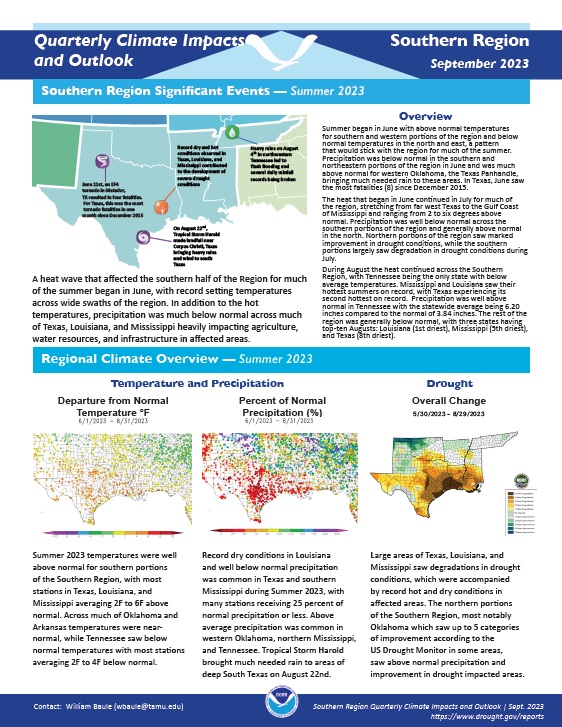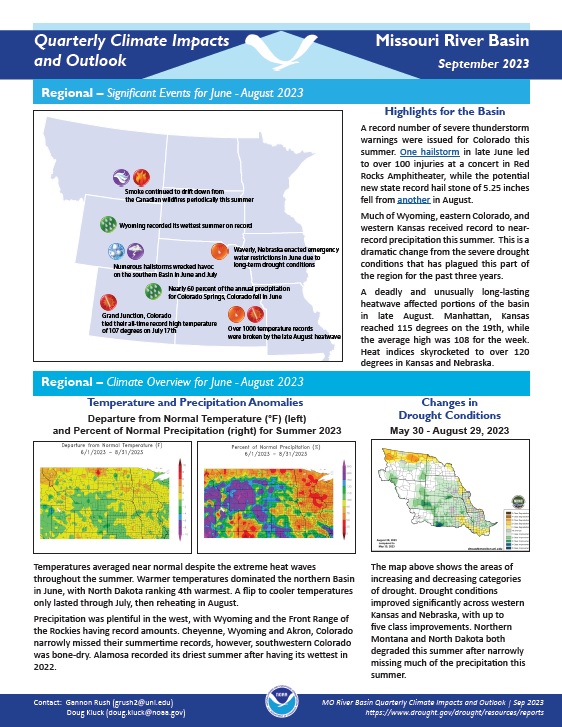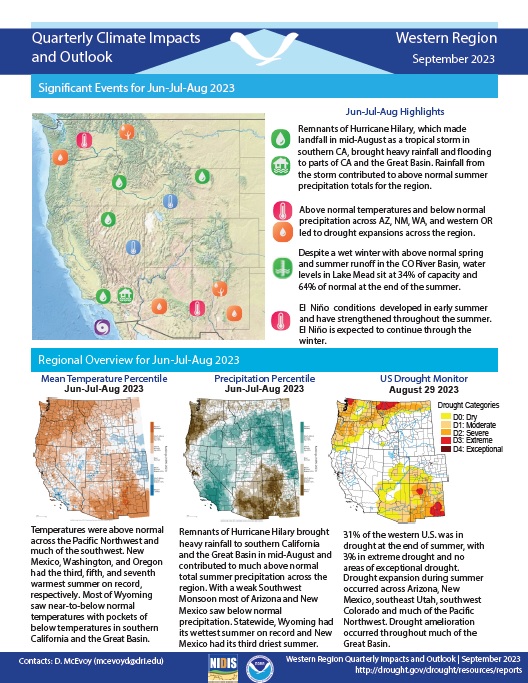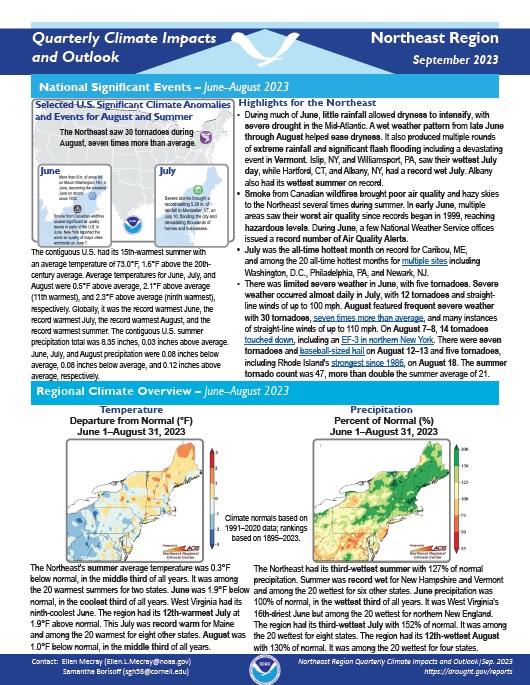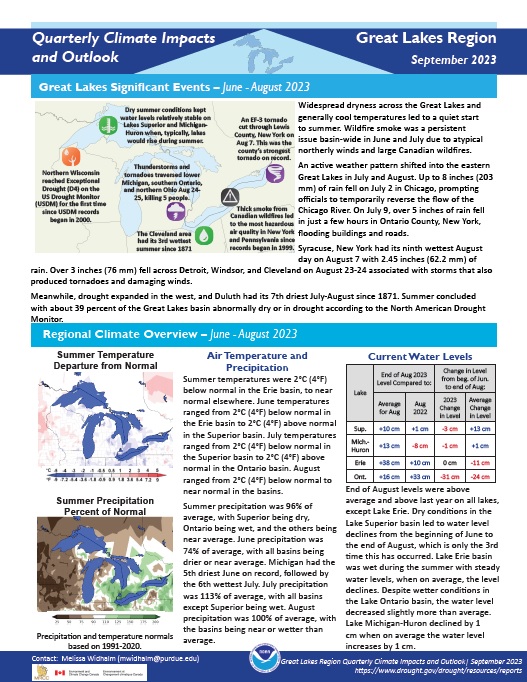This handout provides information on the typical EL Niño winter pattern; the El Niño outlook; potential winter and spring impacts; and comparisons of conditions during previous El Niño years for the Missouri River Basin region. Updated November 2023.
NOAA’s Regional Climate Services Program created these outlooks to inform the public about climate impacts within their respective regions. Each regional report contains easy-to-understand language, and anyone can access them through the U.S. Drought Portal.
Quarterly Climate Impacts and Outlook for the Mid-Atlantic Region for June–August 2023. Dated September 2023.
Average temperatures for the summer season were 0–1 degrees below normal for much of the region. This is the first cooler-than-normal season since the start of the MARISA Climate Summary series in 2018. Summer precipitation amounts varied across the region, with some sites experiencing 50%–75% of normal rainfall with others experiencing over 150% of their normal amounts of rainfall.
Quarterly Climate Impacts and Outlook for Alaska and Northwestern Canada for June–August 2023, with an outlook for October–December 2023. Dated September 2023.
Summer was exceptionally warm across much of northwest Canada and portions of northern and eastern Alaska. For some areas, this was the warmest summer on record, as measured by the daily average temperature for the June through August period.
Quarterly Climate Impacts and Outlook for the Canadian and U.S. Prairies and High Plains for June–August 2023, with an outlook for October–December 2023. Dated September 2023.
While much of the Prairies and High Plains saw warmer-than-normal conditions, the southwestern region remained cooler than normal. Much drier-than-normal conditions were observed across regions along the international border, with the dry spell extending further inland which impacted regions within Saskatchewan, Manitoba, and Minnesota.
Quarterly Climate Impacts and Outlook for the Southern Region for June–August 2023. Dated September 2023.
Quarterly Climate Impacts and Outlook for the Missouri River Basin for June–August 2023. Dated September 2023.
Temperatures averaged near normal despite the extreme heat waves throughout the summer. Precipitation was plentiful in the west, with Wyoming and the Front Range of the Rockies receiving record amounts. Cheyenne, Wyoming and Akron, Colorado narrowly missed their summertime records; however, southwestern Colorado was bone-dry.
Quarterly Climate Impacts and Outlook for the Gulf of Maine Region for June–August 2023. Dated September 2023.
Summer was up to 2°C (4°F) warmer than normal. Precipitation for the summer season ranged from near normal to more than 200% of normal. It was the wettest summer on record for several Maritimes sites and among the 10 wettest for a few other sites in the region.
Quarterly Climate Impacts and Outlook for the Western Region for June–August 2023. Dated September 2023.
Temperatures were above normal across the Pacific Northwest and much of the Southwest. New Mexico, Washington, and Oregon had their third, fifth, and seventh warmest summer on record, respectively. Remnants of Hurricane Hilary brought heavy rainfall to southern California and the Great Basin in mid-August and contributed to much-above-normal total summer precipitation across the region.
Quarterly Climate Impacts and Outlook for the Northeast Region for June–August 2023. Dated September 2023.
The Northeast's summer average temperature was 0.3°F below normal, in the middle third of all years. It was among the 20 warmest summers for two states. The Northeast had its third-wettest summer with 127% of normal precipitation. Summer was record wet for New Hampshire and Vermont and among the 20 wettest for six other states.
Quarterly Climate Impacts and Outlook for the Great Lakes Region for June–August 2023. Dated September 2023.
Summer temperatures were 2°C (4°F) below normal in the Erie basin, to near normal elsewhere. Summer precipitation was 96% of average, with Superior dry, Ontario wet, and the others near average.



